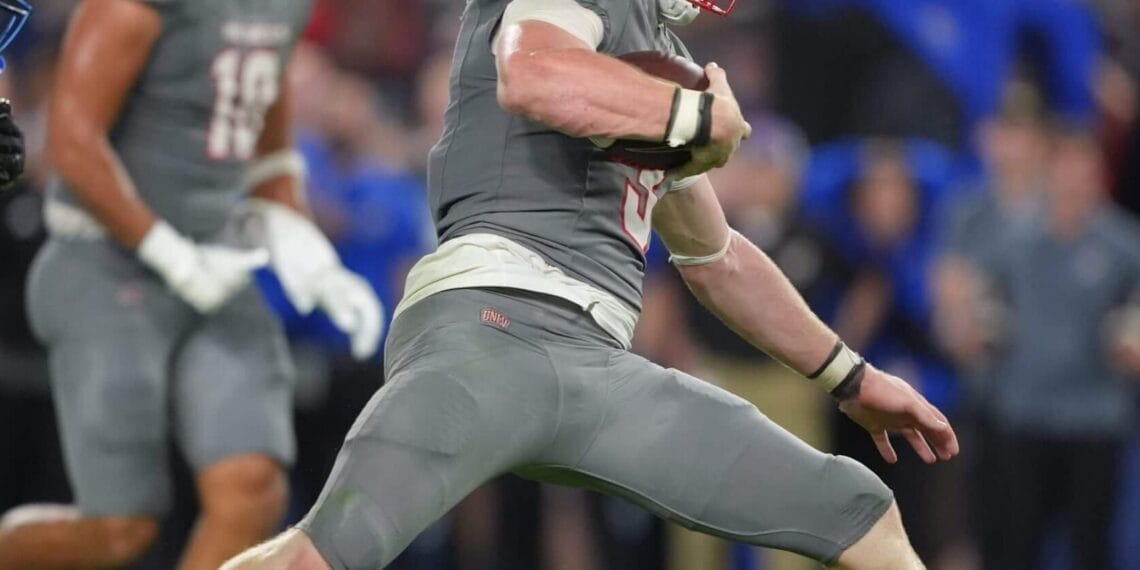The Gist
In recent developments, players in certain sports have been given the green light to earn money from their name, image, and likeness (NIL). This change allows athletes to take advantage of their popularity and brand themselves, which can lead to significant financial opportunities. For the first time, players can sign sponsorship deals, promote products, and receive payment for appearances, which is a shift from the traditional model where college athletes could not benefit financially from their fame.
However, this new freedom is accompanied by challenges. The marketplace for NIL deals is chaotic, and there are currently no solid guidelines or rules governing how these transactions should be handled. This lack of structure can lead to confusion and potential exploitation, as both players and companies navigate uncharted waters. Therefore, while the opportunity for players to monetize their likeness represents a great leap forward, the absence of clear regulations raises concerns about fairness and security.
The Good
- New Opportunities: Players can now earn money, which can benefit their financial situations while they play sports.
- Empowerment: Athletes have more control over their personal brand and can make decisions that reflect their values and interests.
- Market Growth: This shift could lead to a thriving marketplace, creating jobs in marketing and advertising related to sports.
- Increased Visibility: Athletes can gain more public attention, which may lead to better career opportunities beyond collegiate sports.
- Encouraging Fairness: Allowing players to monetise their likeness addresses long-standing issues of fairness in the sports industry, where only institutions benefited financially.
The Bad
- Lack of Regulation: Without clear guidelines, there is potential for exploitation of inexperienced players by companies looking to profit off their talents.
- Fairness Issues: Not all athletes will have the same ability to attract sponsorships, leading to disparities between popular players and less well-known ones.
- Pressure to Perform: Young athletes might feel pressured to perform well not just in sports but also in their endorsements, affecting their mental health.
- Time Commitment: Balancing academics, sports, and endorsements can strain players, risking their education and athletic careers.
- Unscrupulous Practices: The new system might attract dishonest individuals or organisations looking to take advantage of naive athletes.
The Take
The recent changes to the rules concerning athletes and their ability to monetise their name, image, and likeness have sparked a significant shift in the landscape of collegiate sports. For years, college athletes were barred from making any money from their status, which left many feeling that they were exploited while schools and other entities profited from their hard work and dedication. Now, players can finally cash in on their own popularity, signing deals with companies or engaging in promotional events. This development marks a turning point, giving athletes more agency in how their public persona is managed.
Despite this exciting change, the world of NIL deals is still filled with uncertainty. Presently, there are no standardised regulations or guidelines that define how these deals should work. Each situation is unique, and this absence of structure can lead to confusion for players and companies alike. For example, athletes may not fully understand the contracts they are signing, and sponsors may be equally unsure of what is acceptable. This ambiguity creates a breeding ground for potential disputes and misunderstandings.
There are elements to be cautious about when it comes to monetising one’s likeness. The absence of regulations has led to concerns about fairness in the marketplace. Not every player will have the same ability to attract sponsorships, meaning there could be a significant divide between star players, who may earn thousands of pounds, and benchwarmers, who may receive nothing. This disparity could create tension among team members, impacting team dynamics in ways that are hard to predict.
Moreover, many athletes are just teenagers or young adults trying to manage their sports commitments while balancing their academic responsibilities. The added pressure to secure and maintain endorsements could weigh heavily on young shoulders. Striking a balance between sports, school, and business could interfere with their performance and focus, which may be detrimental to their futures both on and off the field. Some athletes could find themselves overloaded, risking burnout or promoting products that don’t align with their personal values, just for the sake of making money.
In addition, the new landscape might attract some less-than-honourable figures looking to exploit young players. Unscrupulous agents or organisations may see this as an opportunity to approach naive athletes, promising lucrative deals that could turn out to be nothing more than smoke and mirrors. Consequently, players need to be educated and cautioned about whom they trust when venturing into this new territory.
Overall, while the chance for athletes to monetise their names, images, and likenesses offers many exciting possibilities, it equally presents challenges that cannot be ignored. Moving forward, it will be vital for the sports community and governing bodies to develop clear and fair guidelines to protect the interests of all parties involved, ensuring that this opportunity doesn’t turn into a potentially harmful situation for the very players it aims to uplift. The goal should be to foster an environment where players can thrive, grow, and profit without facing exploitation or undue pressure.



































































